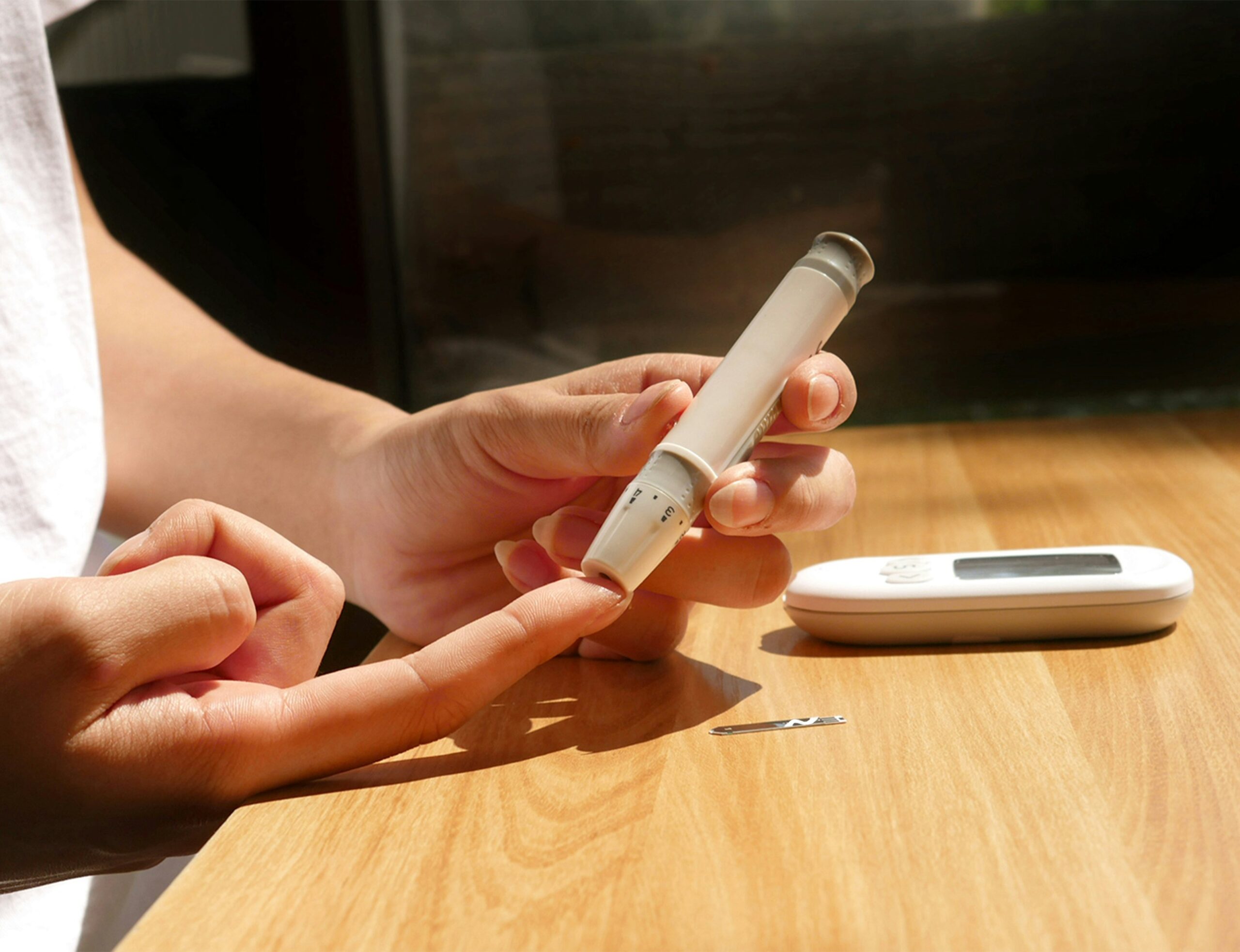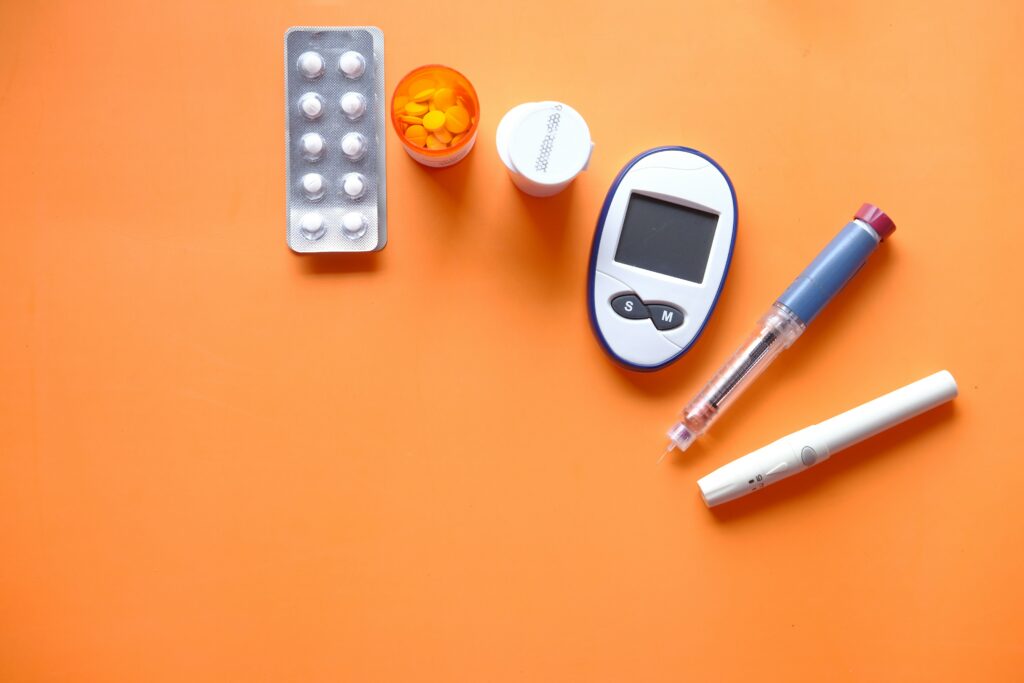Your cart is currently empty!

10 Lesser-Known Symptoms of Diabetes
In the fast pace of daily life, our bodies sometimes send quiet signals that something isn’t quite right. These subtle symptoms often show up in consecutive, small ways, fatigue one day, blurred vision the next—but they’re easy to dismiss when life is busy. Still, recognizing these early signs could be the key to catching a condition like diabetes before it becomes serious. Diabetes, a condition that affects millions worldwide, is a master of disguise, often revealing itself through signs we might dismiss as mere nuisances of a busy life. Most of us recognize the common symptoms of diabetes: excessive thirst, frequent urination, and unexplained weight loss. But diabetes can also show up in ways that are far less obvious and much more confusing.
These lesser-known symptoms often go unnoticed, making early detection even more challenging.
Imagine the body as a complex network of signals, where sugar, the fuel that powers our every action, sometimes loses its way. When this happens, the echoes of this disruption ripple across the body, creating a spectrum of symptoms that are as varied as they are surprising. Diabetes can affect many parts of the body, including the skin and eyes. These changes often happen gradually and may go unnoticed at first.
This post is your map of the hidden corners of diabetes’s impact on the body. This is an invitation to look beyond the common symptoms you may already know. Lesser-known signs often whisper for attention before louder symptoms appear. Our mission is not to alarm but to inform and empower. We’re here to shed light on symptoms that often go unnoticed. Recognizing them can lead to earlier detection. With the right support, you can take steps toward better health and a clearer understanding of diabetes.
Join us as we delve into the lesser-known symptoms of diabetes. You might be reading this for yourself or someone you care about. Either way, understanding the signs is the first step toward better health.
Let’s take that step together.
Understanding Diabetes
At its core, diabetes is a tale of a body’s journey with sugar, the vital source of energy that fuels our every step, thought, and heartbeat. This journey, however, takes an unexpected turn when the body’s ability to manage this sugar falters. Diabetes occurs when sugar can’t properly enter the cells to provide energy. Instead, it builds up in the bloodstream and causes a chain reaction that affects the entire body.
This story has two main characters: Type 1 and Type 2 diabetes. Type 1 diabetes happens when the body’s immune system mistakenly attacks the cells that produce insulin. Insulin acts like a key, helping sugar enter cells to be used as energy. It’s a tale of seeking balance, of finding a way to replace the missing key and restore harmony.
Type 2 diabetes, on the other hand, unfolds more gradually. It’s a story of resistance, where the keys are plenty, yet the locks have grown indifferent, weary from overuse. Managing diabetes is about learning to adapt and support the body’s response to insulin. With the right approach, it’s possible to restore balance and improve overall health.
Both types of diabetes are journeys of resilience, of learning to navigate a path strewn with challenges yet rich with the potential for understanding and growth. The importance of early detection in these stories cannot be overstated. Recognizing both common and uncommon symptoms can help reveal what’s happening beneath the surface. It’s a crucial first step in taking control and guiding your health in the right direction.
Diabetes, in all its complexity, is not just a condition but a teacher. It instructs us in the art of listening to our bodies, understanding their signals, and responding with care. Living with diabetes comes with challenges, but it also creates opportunities for growth and healing. With the right tools and support, this journey can lead to balance, strength, and a healthier life.
Beyond the Common Symptoms
While the common symptoms of diabetes, like a thirst that cannot be quenched, a hunger that knows no satisfaction, and weight that slips away unnoticed, tell a story that many have learned to recognize, there are other, more subtle narratives unfolding in the shadows. These are 10 of the lesser-known symptoms of diabetes, whispers of a body seeking balance amidst the ebb and flow of sugar levels.
- Skin Changes: The canvas of our skin often tells the first tales of change. Acanthosis nigricans, characterized by dark, velvety patches in body folds, is a sign of insulin resistance, a precursor to diabetes (American Diabetes Association). Certain skin conditions, like diabetic dermopathy and necrobiosis lipoidica diabeticorum, can signal blood sugar issues. These subtle signs are reminders to take a closer look at your overall health.
- Gum Disease and Dental Problems: Our mouths, gateways to nourishment, can also reveal the impact of diabetes. Gum disease and dental problems become more prevalent as elevated sugar levels in saliva foster bacteria, leading to gingivitis and periodontitis. This symptom underscores the importance of holistic health practices, integrating oral care into diabetes management.
- Fatigue and Irritability: The ebb and flow of energy levels and mood can signal blood sugar fluctuations. Fatigue and irritability aren’t always just signs of stress or a busy life. They can also point to the body’s struggle to use glucose properly—a key issue in diabetes.
- Blurry Vision: The clarity of our vision can fluctuate with the tides of blood sugar levels. High glucose can lead to swelling in the lenses of the eyes, temporarily distorting vision, a warning that blood sugar levels are out of balance (National Eye Institute).
- Numbness or Tingling in Hands and Feet: Diabetic neuropathy, a form of nerve damage, manifests as numbness or tingling in the extremities. This symptom acts as a quiet warning that blood sugar levels may be too high over time. It’s a reminder of the importance of staying on top of blood sugar management.
- Slow Healing of Cuts and Wounds: The healing process slows in the diabetic body, a sign of compromised blood flow and elevated sugar levels that hamper the body’s repair mechanisms (American Diabetes Association).
- Frequent Infections: An increased risk of infections, from urinary tract infections to skin infections, can signal diabetes. High blood sugar levels can weaken the immune system’s ability to fight off invaders, a reminder of the interconnectedness of our body’s systems (American Diabetes Association).
- Unexplained Weight Loss (Type 1 Diabetes): In Type 1 diabetes, sudden weight loss speaks volumes. Without insulin to unlock cells’ doors to glucose, the body turns to muscle and fat for energy, a stark signal of the body in distress (Juvenile Diabetes Research Foundation).
- Hearing Problems: Emerging research suggests a link between diabetes and hearing impairment, a symptom often lost in the noise of everyday life. High blood sugar levels may damage the nerves and blood vessels of the inner ear, straining our ability to hear the world around us (National Institute on Deafness and Other Communication Disorders).
- Disrupted Sleep Patterns (Sleep Apnea): Lastly, the rhythm of our sleep may be disturbed by sleep apnea, a condition more common in those with diabetes. This disruption in sleep highlights the complex interplay between diabetes and sleep health, emphasizing the need for a holistic approach to care (Sleep Foundation).
Each of these symptoms carries a message worth listening to. By tuning into these signals, we empower ourselves with knowledge, enabling proactive steps towards health and wellness. Remember, understanding these symptoms is just the beginning. Consultation with healthcare professionals remains vital in translating these symptoms into a plan of action.

The Importance of Awareness and Early Detection
The benefits of early detection of diabetes ripple outwards, touching every aspect of health and well-being. By identifying diabetes symptoms in its budding stages, you can significantly reduce the risk of complications such as heart disease, kidney failure, vision loss, and nerve damage. Catching diabetes early allows for timely action, like changes in diet, lifestyle, and sometimes medication. These steps can significantly shift the course of the disease, turning it into something manageable.
The Power of Awareness and Education
Awareness and education are the twin pillars supporting early detection. Equipping ourselves with knowledge about diabetes’s risk factors and lesser-known symptoms empowers us to recognize potential warning signs in ourselves and our loved ones. Being aware of the symptoms is the first step toward getting screened and seeking medical guidance. This is especially important for those with higher risk factors like family history, obesity, or other health conditions.
The Role of Regular Health Check-Ups
Regular health check-ups serve as a critical tool in early detection. These check-ups can uncover hidden signs of diabetes through blood glucose testing, even when symptoms might not be apparent. If you’re over 45 or have risk factors for diabetes, regular screenings are especially important. They create a window of opportunity for early action and better long-term health outcomes.
The Impact on Quality of Life
The importance of early detection extends beyond the physical; it profoundly influences quality of life. Early management of diabetes can preserve the joys of daily living, from the pleasure of a leisurely walk unencumbered by pain to the simple delight of a good night’s sleep. It’s about maintaining independence, vitality, and the ability to engage fully with the world around us.
Early detection of diabetes is not merely a medical recommendation; it is a pathway to empowerment, a chance to shape our health narratives actively rather than reactively. Early detection means choosing to listen to what your body is trying to tell you. It’s a way to respect those subtle warning signs instead of ignoring them. With the right steps, diabetes becomes something manageable, not something that controls your life.
Comments
One response to “10 Lesser-Known Symptoms of Diabetes”
-
Propuesta para Healthyamericanusa.
Hola, es un placer saludarte.
Te escribo porque sería interesante comentar contigo la opción de que Healthyamericanusa posicione en los primeros lugares de internet y que aparezca cada mes como noticia en cientos de periódicos digitales, con artículos reales dentro del periódico que no se marcan como publicidad y que no se borran.
Estas noticias se publicarán en más de cuarenta periódicos de gran autoridad para mejorar el posicionamiento de tu web y la reputación.
¿Podrías facilitarme un teléfono para aplicarte un mes gratuito?
Muchas gracias.

Leave a Reply